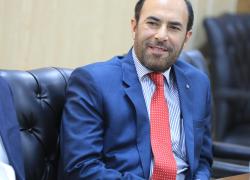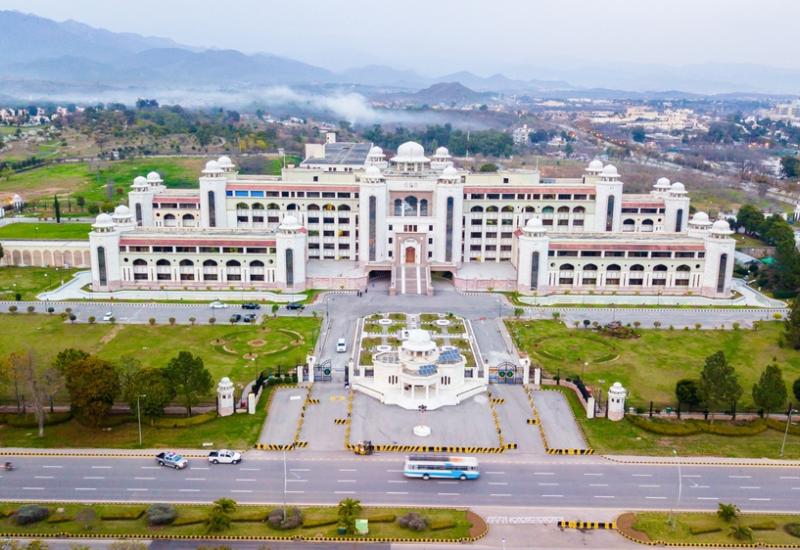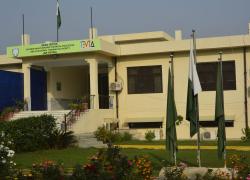The 10 major reasons why Khyber Medical College should not become a University
Khyber Medical College’s (KMC) desire to become a university is not just about its own growth; it has potential implications for the growth and development of medical education in the entire province. Let us look into the motivation behind KMC’s transition to the university stature and explore its potential for better healthcare outcomes in the country.
KMC’s driving forces:
- Enhanced academic scope: As a university, KMC could offer postgraduate programs, PhDs, and specialized fellowships, expanding its academic offerings beyond MBBS and solidifying its position as a premier medical education and research center. Resultantly, the vast academic and research potential of KMC will optimally be utilized which is essential for an academic institution to flourish.
- Greater curriculum autonomy: KMC could tailor its curriculum to address regional health challenges and adapt to the evolving medical landscape, offering greater flexibility and relevance. Upgradation to a university rank will allow for expansion and diversification of academic programs which may include introduction of new undergraduate and postgraduate programs, fostering a more comprehensive and specialized curriculum.
- Research and innovation: University status would encourage and facilitate cutting-edge research, attracting renowned researchers and fostering collaborations of KMC with leading institutions, potentially leading to advancements in healthcare. The transition to university status may bring about improvements in research infrastructure, including state-of-the-art laboratories, research centers, and technology facilities. This can create a more conducive environment for cutting-edge research and innovation. The transition to university status may encourage interdisciplinary research initiatives, bringing together researchers from various disciplines to address complex healthcare challenges. This can lead to innovative solutions and a more comprehensive understanding of healthcare issues.
- Expansion and impact: KMC could diversify its programs beyond medical sciences, offering allied health programs like nursing, paramedics, physiotherapy, pharmacy, microbiology, biotechnology and public health, contributing to a more robust healthcare ecosystem. With university status, KMC may have the flexibility to establish incubators, accelerators, or partnerships with industry to translate research findings into practical applications and products.
- Global recognition: University status could increase KMC’s global visibility and credibility, facilitating international collaborations and enriching the educational experience for its students. University status shall further enhance its global recognition and facilitate international collaborations. This can open up opportunities for joint research projects, exchange programs, and exposure to diverse perspectives in the field of medicine and healthcare.
While Khyber Medical College’s (KMC) aspiration to become a university holds promise, there are also legitimate concerns worth consideration. Here are 10 reasons why KMC’s transformation to a university might not be an ideal proposition and a win-win situation for both KMU and KMC:
- Duplication of efforts and increased competition: Khyber Medical University (KMU) already exists, offering similar programs and research opportunities. KMC becoming a university might duplicate efforts, leading to unnecessary competition for limited resources, faculty, and students. Concerns about duplication of resources and competition for limited funding or student enrollment might be genuine. The territorial jurisdiction of KMU is said to be evenly divided putting both the KMC and KMU at a serious disadvantage. This could result in a weaker overall medical education system in Khyber Pakhtunkhwa. Remember this is not like a private enterprising concern, but a public sector entity that will be craving for funds from the public exchequer all the time.
- Fragmentation and loss of synergies: A fragmented medical education landscape with two competing universities could hinder collaboration and knowledge sharing. KMU and KMC might focus on similar areas instead of complementing each other, potentially limiting specialization and expertise within the region.
- Financial sustainability concerns: Establishing and running a university comes with significant financial commitment. KMC might struggle to secure enough funding, impacting infrastructure development, faculty recruitment, and research initiatives in the face of dwindling financial health of the government.This is a matter of genuine concern each stakeholder needs to understand. Ensuring adequate funding for sustained growth and quality medical education could be challenging which will require potentially increasing tuition fees or compromised standards. This could compromise the quality of education and research at both KMC and KMU. Besides, this element has long-term implications for KMC university, since almost all public sector universities in the province are facing a severe financial crunch as the government (both HEC and provincial government) has expressed its inability, multiple times, to provide sufficient funding to the universities.
- Dilution of KMC’s focus on undergraduate education: Currently, KMC excels in its core mission of providing high-quality MBBS education. Becoming a university could divert attention and resources towards postgraduate programs and research, potentially neglecting the needs of undergraduate students. Ensuring adequate funding for sustained growth and quality education could be challenging. The historical Islamia College Peshawar now a university is a living example, losing its identity as a seat of quality education to the substandard degree awarding status, having poor financial health. It is enticing and catchy to become a university but sustaining it financially and maintaining it quality-wise shall be daunting. Learning from the case study of (ICUP) may help us understand the complexity of the existing landscape of higher education in the country.
- Potential brain drain and faculty competition: KMC and KMU might compete for existing faculty, leading to a “brain drain” from both institutions. This could weaken the quality of teaching and research in both universities, negatively impacting students and academic output. Having an adequate number of qualified faculty for its post-graduate programs meeting HEC criteria shall be a hot potato for both universities.
- Administrative burdens and complexity: University management is complex, requiring significant administrative infrastructure and expertise. KMC might face challenges in adapting to this new academic structure, potentially leading to inefficiencies and bureaucratic hurdles. Managing a larger and more complex institution may pose governance challenges and effective leadership and management strategies. Implementing these administrative changes smoothly and effectively requires careful planning and execution. This may be onerous for the leadership and they may lose sight of the academic excellence the KMC currently cherishes.
- Uncertain impact on research output and quality: While aspirations for increased research are noble, it’s unclear whether KMC could achieve the critical mass of human, physical and financial resources needed for impactful research compared to a larger university like KMU. The university’s status could indeed pose negative implications for KMC as it could dilute research efforts and limit potential breakthroughs. These complexities can create delays, discourage researchers, and hinder the agility needed for cutting-edge research. Insufficient funding or allocation for research infrastructure, including labs, equipment, and technology, may hinder research quality and restrict the scope of the new research projects. This could limit KMC’s ability to attract and retain top researchers and compete with established research institutions.
- Potential erosion of public trust and confidence: A sudden change in KMC’s status could create confusion and uncertainty among students, faculty, and the public. This could erode trust in the institution and impact student morale and recruitment as the public may be asking for a solid justification for a new university when the existing university is doing its best to deliver.
- Lack of clear and defined specialization: KMC’s specific areas of focus as a university remain unclear as KMU is already in the business for quite some time and is offering abundant academic programs as per market demand and requirements of these affiliated colleges. Without distinct specialization and differentiation from KMU, the institution might struggle to carve out a unique niche and establish its identity as a medical university.
- Alternative models for expansion and creating impact:
Instead of becoming a university, KMC could explore alternative models for expansion and creating impact. Collaborations with KMU, establishing centers of excellence in specific areas of research, or offering unique postgraduate programs under the umbrella of KMU are potential avenues worth considering. There is no sense and sanity in getting rid of KMU without thinking about the long-term implications of the proposed scheme.
Conclusion
In conclusion, while KMC’s aspirations to become a university are well-intended, it’s crucial to carefully weigh the potential downsides and consider alternative models before embarking on this transformative journey. A thorough analysis of the potential impact on the medical education landscape, faculty, students, and the existing Khyber Medical University is essential before making a final decision.
While the university status holds potential for positive advancements, it’s crucial for KMC to carefully consider these potential negative impacts and design its university statutes and structures to foster a dynamic and supportive environment for research and innovation to thrive. By prioritizing research resources, streamlining procedures, encouraging interdisciplinary collaboration, and promoting the translation of research into practice, KMC can mitigate these challenges and leverage its new status to become a true leader in medical research and innovation.


















